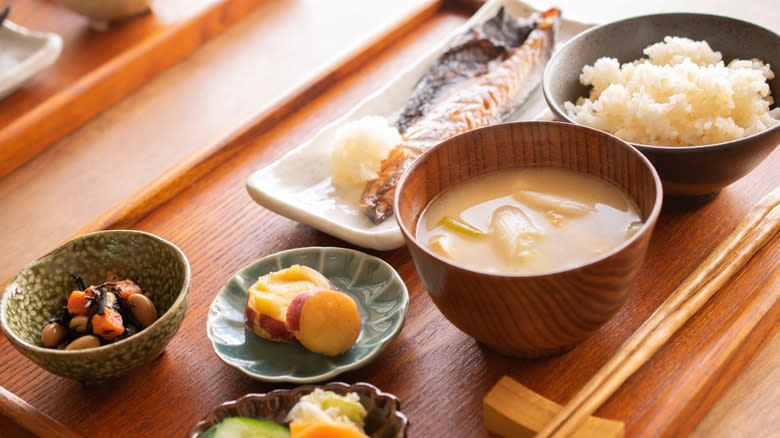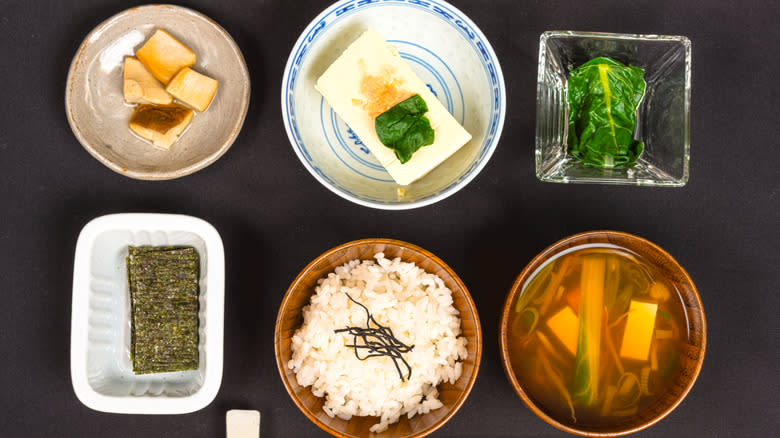Here's What A Quintessential Breakfast Looks Like In Japan

Breakfast looks quite different around the world. In Japan, there's a traditional format to what's served for this meal, and much like other cuisine on the island, it's deftly balanced. The food follows a common dining format called ichiju sansai, which means that there's a bowl of rice, soup, and three other accompanying dishes. Most popularly, these entail a starch option (usually a bowl of white rice), miso soup, the fermented bean dish natto, some sort of pickled vegetable, and a small serving of fish.
Such servings may overlap with lunch and dinner foods and may even be leftovers from the previous day. There's not much distinction drawn among breakfast, lunch, and dinner foods, and Japan doesn't have the categorical breakfast foods like pastries, sugary cereals, and scrambled eggs that other countries enjoy. The first meal of the day in Japan usually has small portions and a lack of heavy, deep-fried foods (unless they're leftovers).
Today, many people in Japan don't have time for traditional breakfasts and instead opt for bread-based foods and a hot drink on their way to work. But if you're keen to try a traditional Japanese breakfast, here are all the different components, what they mean, and what ingredients you'll commonly use.
Read more: 25 Delicious Ways To Use Up Leftover Rice
Japanese Breakfast Involves A Carefully Considered Platter Of Five Dishes

A Japanese breakfast is traditionally a varied and appetizing arrangement of dishes appealingly plated. It's seldom enjoyed eaten out, instead typically prepared in the home or at a hotel, especially at a boutique inn called a ryokan. Traditionally, breakfasts are made quickly in Japan, with ingredients already on-hand or portions of rice or soup left in the fridge from dinner.
The most essential element of a traditional five-plate Japanese breakfast is rice -- typically the ubiquitous white variety, sometimes mixed with brown genmai rice. As rice is a cornerstone of Japanese cuisine, most households have a rice cooker for quick and easy preparation. A bowl of simple miso soup also usually accompanies breakfast, commonly reheated leftovers or instant-packet miso. The same kind of preparedness also applies to the natto and pickled vegetables, which are typically purchased ready for consumption. Natto fulfills the protein requirement of Japanese breakfasts.
All that's left to prepare is the protein option (if you're not having natto) and one final dish. Salmon and mackerel are two popular protein options, typically quickly pan-fried or grilled with a simple salt garnish. Some opt for a side of eggs, such as tamagoyaki, the Japanese rolled omelet. The final vegetable option is usually a salad, blanched and seasoned greens, or seaweed. Coffee, tea, and juice are common to have with Japanese breakfasts, but if you want to go the extra mile, try sencha, the most popular green tea in Japan.
Read the original article on Tasting Table.
